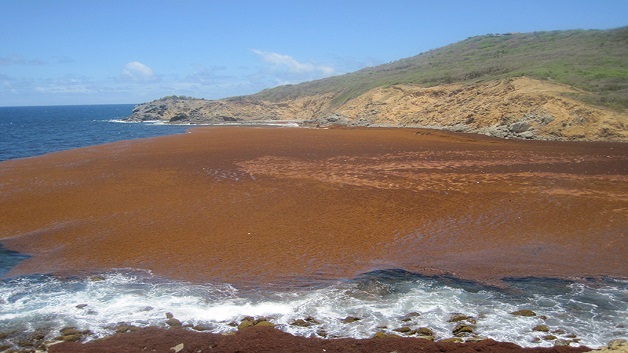St. Vincent and the Grenadines like other countries in the Caribbean is continuing to struggle to deal with the unusually large amount of Sargassum seaweed present in the sea water and which is being washed up on many beaches.
Since 2011, massive quantities of Sargassum seaweed, also known as Sargasso, have floated throughout the Caribbean, impacting marine resources, fisheries, shorelines, waterways, and tourism.
The amount of observable weed has lessened since the largest bloom of October 2015; however this process is recurring and this year we are once again seeing large amounts of this ocean-carried weed.
Many individuals and community groups have been involved in voluntary efforts to remove the strong-smelling rotting seaweed on beaches, but such efforts have been short-lived.
According to Chris Isaacs, Senior Fisheries Officer in the Fisheries Division of the Ministry of Agriculture, the presence of this Sargassum seaweed within the Caribbean comes as a result of global pattern changes.
Mr. Isaacs says apart from its negative effects, the Sargassum seaweed is a rich habitat for a diversity of fish.
The Senior Fisheries Officer explained that following the presence of the Sargassum seaweed in local waters in 2011, Cabinet established a task force to address the situation, and a management plan was formulated which is currently being updated.
He said the Sargassum seaweed can be utilized as mulch; hence he is encouraging local farmers to collect and use the Sargassum seaweed found on beaches as organic fertilizer in their gardens.
On a larger scale, Mr. Isaacs said the Ministry of Agriculture is hoping to turn the Sargassum seaweed into organic compost on a more commercial level.
He said the Research and Development Division within the Ministry of Agriculture will be the ones to spearhead this effort in the coming months.









